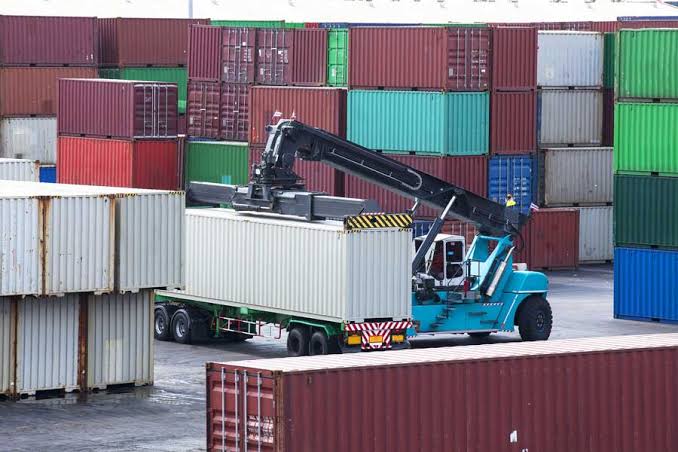The incoming administration must immediately address the worsening public transport and logistics problem, which if unattended could worsen the economic problems of the country.
Besides the urgency of addressing a dismal public transportation and logistics sectors, the incoming administration must also study how to make the roads more passable instead of further shrinking them through concrete road barriers and other stumbling blocks to mobility.
This was the prescription of the business sector, through the country’s oldest and biggest Philippine Chamber of Commerce and Industry which appealed to both the outgoing and incoming administrations to act on these concerns with urgency and dispatch, citing that lack of public transportation and logistics to curb further economic problems and eventual decline.
“There are a lot of concerns besetting our transportation and logistics industry. These issues need a comprehensive set of measures to curb further problems and avoid more losses to the economy,” PCCI President George T. Barcelon said at the recent 2nd General Membership Meeting of the country’s biggest business alliance.
Barcelon emphasized that transportation and logistics are essential to sustaining economic gains and building on the reform measures meant to make the country attractive to investments and conducive to jobs-creating activities.
Meanwhile, experts and stakeholders shared Barcelon’s sentiments and added their recommendations according to their respective field of expertise, Business Mirror reported.
For his part, Transportation expert and consultant engineer Rene Santiago pointed out that while travel demands have shrunk with work-from-home arrangements, the modal share of cars has increased due to the Covid-19 scare, yet road capacities have been reduced with bicycle lanes in place. (But bike lanes became necessary since the pandemic because of the government’s utter failure to address the deplorable public transport problems).
Santiago pointed out that the shortage of buses and jeepneys due to government rules add to the riding public’s transport burdens.
New rules worsen woes
“It required all jeepneys, about 60,000 of them, to reapply on new routes that have not yet been defined up to now,” said Santiago.
On top of these transportation problems, Santiago said, “we have made the streets of Metro Manila very dangerous with concrete barriers all over the place, so they promote accidents.” He highlighted that the only “bright spot” are the motorcycles, as they have been the lifeline during the Enhanced Community Quarantine (ECQ).
Santiago noted that the only solution is to decouple mobility from urban and income rise.
“This is what I call the urban dynamics: as the metropolis grows, it attracts more population or more employees, more work force mean more trips and longer trip businesses,” he added.
Pierre Curay, president of the Supply Chain Management Association of the Philippines, emphasized that at 25 percent, the share of logistics costs in the percentage of sales in the country is the highest among the Philippines’s neighbors in the Association of Southeast Asian Nations (Asean).
Curay highlighted traffic and transportation problems as some of the culprits behind the country’s high logistic cost.
“Transport faces a lot of challenges in terms of policies as it is one of the primary focus of penalties that slows down traffic but increases costs. Examples of these are the truck ban, single lane, and number coding scheme which adds to the cost of deliveries. If the cost of transport is high, the cost of commodities also increases,” said Curay.
Curay said existing policies only allow deliveries once every two days and if you can deliver only that little, that is basically doubling your cost.
Curay agreed with Santiago’s proposals to continue with Build, Build, Build infrastructure projects and the building of more railways. He further suggested adjusting seaports capacity in Batangas and Subic, the creation of Integrated Logistics and Supply Chain Infrastructure, Supply Chain National Development Council, removal of truck ban and color coding for trucks, and allowing night-time deliveries to mall and retail stores.
Cargo movement
The International Container Terminal Services, Inc. (ICTSI) Executive Vice President Christian Martin Gonzales proposed the building of purpose-built infrastructure to support the movement of cargo through the city and maximize the existing ones. ICTSI belongs to the Enrique Razon group, a major supporter of Ferdinand Marcos Jr.
“With all the consumption that is being driven out of Metro Manila, we must ensure that we plan the infrastructure as well as the services that surround it in such a way that it facilitates movement,” said Gonzales.
Car-centric policies
For his part, president of the Nagkakaisang Samahan ng Nangangasiwa ng Panlalawigan ng Bus sa Pilipinas Inc. Atty. Vincent Rondaries, suggested that government should “veer away from car-centric policies.”
With this, he proposed long-term solutions such as the creation of a Mega Manila Transport Authority in charge of a unified traffic system and the issuance of all transport franchises for land, sea, rail, and air operating in Mega Manila; develop a credible database to determine patterns and volumes of commuters and transfer of government offices away from congested areas.
PCCI will submit the experts’ proposals with its wish list to the incoming government.
Tags: #transportandlogistics, #concretebarriers, #cargoinfrastructure, #transportation, #economy
